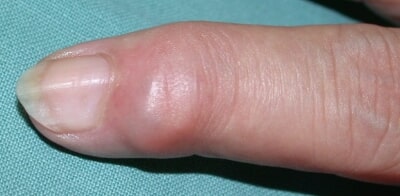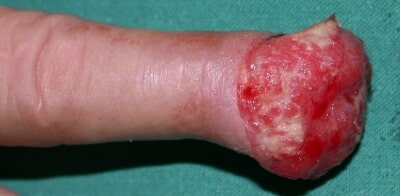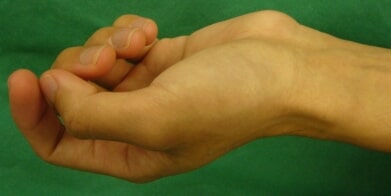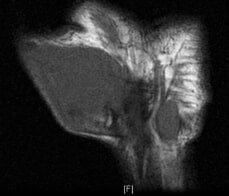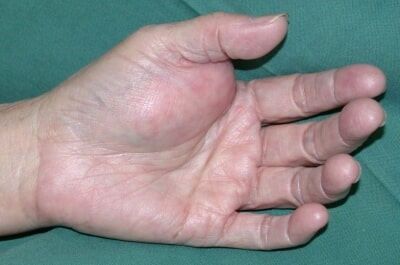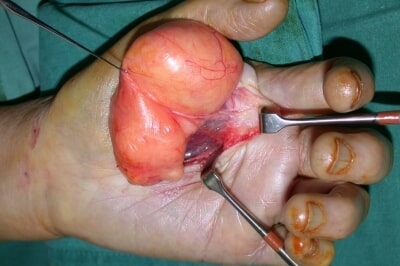Swellings in the Hand
Swellings, or lumps, in the hand and wrist are common conditions presenting to the Hand Surgeon. They can arise from a variety of causes, from benign and harmless conditions, to malignant and dangerous cancers (although these are rare).
The location, size, duration and rate of growth, and the presence or absence of pain help to differentiate between the different types of lumps and swellings.
Lumps around the finger joints could be ganglion cysts, synovial tissue swelling, and a benign tumour of the synovium (pigmented villonodular synovitis). Ganglion cysts often occur as a result of joint degeneration or arthritis. Synovial swelling (synovitis) can be caused by rheumatoid arthritis or a chronic type of infection.
|
|
|
Tumours in the hand can arise from any tissue present in the hand – skin (melanoma, squamous cell carcinoma), fat (lipoma), synovial lining of the joints (synovitis, pigmented villonodular synovitis), nerve (neurilemmoma / schwannoma, neurofibroma), blood vessels (vascular malformation), and bone (enchondroma, bone cyst, giant cell tumour). Lumps may also be caused by foreign body or skin elements trapped under the skin (foreign body granuloma and epidermal cyst respectively).
Diagnosis of hand swellings and lumps is made by a detailed history and a meticulous clinical examination. X-rays and special imaging such as ultrasound and magnetic resonance imaging (MRI) are often required. Sometimes, blood tests are useful.
|
|
|
| Nerve sheath tumour (neurilemmoma) arising from ulnar nerve shown on MRI. | |
|
|
|
| Benign fat tumour (lipoma) removed at surgery after carefully separating the blood vessels and nerves. | |
Treatment of hand swellings depend on the cause. Those that cause pain, or impede movement and function, or are potentially dangerous need to be removed by surgery, and the lump sent for histological examination for confirmation. Fortunately, most of the tumours in the hand are benign.
Some benign lumps may be left alone and observed carefully over time. They need to be removed should they grow bigger, or their characteristics change to become potentially dangerous.



